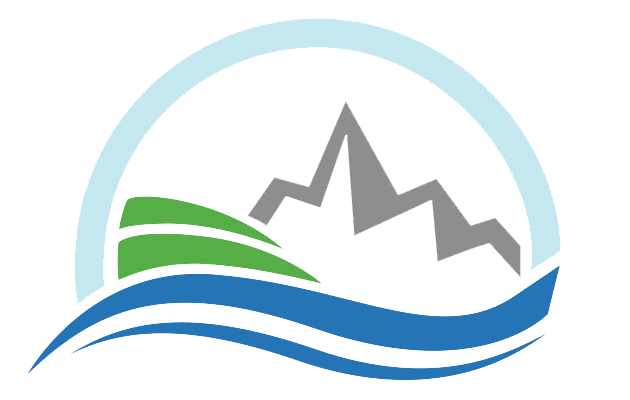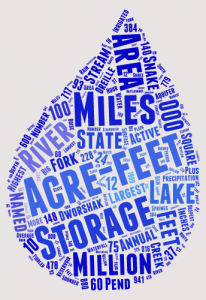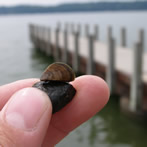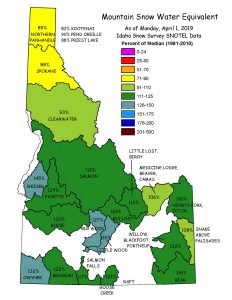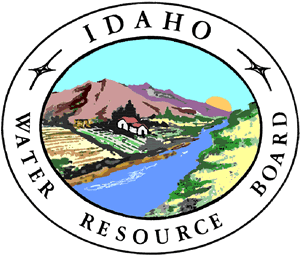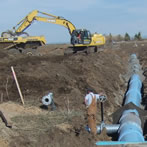Small Scale Mining Permits Frequently-Asked Questions
Small Scale Mining Permit
Small scale mining is the use of any equipment to dig, scrape, dredge, or otherwise move streambed materials from below the ordinary high watermark in search of minerals. The use of such equipment is limited to:
- suction dredges having a nozzle diameter of five (5) inches or less,
- suction dredges having power sources (motors or engines) rated at 15 horsepower (HP) or less, and
- non-powered sluice equipment moving more than one-quarter (1/4) cubic yard per hour.
For more information, see IDAPA 37.03.07 – Stream Channel Alteration Rules.
The Letter Permit does not authorize small scale mining on the South Fork Clearwater River (SFCR) or the McCoy Creek Drainage (tributary to South Fork Snake River). For small scale mining on the SFCR, you must submit the IDWR South Fork Clearwater River Special Supplement. For small scale mining on McCoy Creek and certain tributaries, you must submit a Joint Application for Stream Channel Alteration Permit.
The Idaho Department of Environmental Quality (DEQ) administers the Idaho Pollutant Discharge Elimination System (IPDES) permit program. Anyone operating a small suction dredge on any stream or river in Idaho must contact the DEQ to obtain IPDES suction dredge general permit coverage. Additional information regarding IPDES permitting may be obtained via DEQ’s website.
The IDWR Small Scale Mining Authorization (Letter Permit), or simply Letter Permit, is an annual permit that authorizes the permit holder to conduct small scale mining activity on OPEN streams.
- For Idaho residents, the Letter Permit cost is $10 per person.
- For non-Idaho residents, the Letter Permit cost is $30 per person.
You can download and print the IDWR Letter Permit and accompanying instructions from the IDWR website. Once you complete the IDWR Letter Permit form, mail it along with the appropriate fee to any IDWR office for approval. IDWR Letter Permits can also be completed in person at any IDWR office.
If you visit an IDWR office to submit your completed IDWR Letter Permit form and fee, it only takes a few minutes to process and you will leave the office with your permit and payment receipt.
If you send your completed IDWR Letter Permit form and fee by postal mail, your permit and payment receipt will be returned to you by email (if provided) or postal mail.
The IDWR Letter Permit authorizes you to use small-scale, mechanized equipment, including but not limited to suction dredges, powered sluice boxes, and high bankers that are limited to motors or engines rated no more than 15 HP. Suction dredge intake hoses are limited to a nozzle diameter of no more than five (5) inches.
Use of a powered pump to divert water from the stream to a sluice box or high banker operated below the ordinary high watermark is considered mechanized mining equipment and requires an IDWR Letter Permit.
To use equipment exceeding these limits, you are required to complete and submit a Joint Application for Stream Channel Alteration Permit.
The IDWR Letter Permit authorizes mining activity for a maximum of one year from January 1 to December 31. However, many streams and rivers have limited small scale mining seasons and some streams are closed to small scale mining. To view a list of open streams and mining seasons, review the IDWR Small Scale Mining Program Instructions or visit the IDWR Small Scale Mining Streams map.
Everyone operating small scale mining equipment is required to have their own IDWR Letter Permit. Since only one person may be listed on an IDWR Letter Permit, each individual operating the equipment must complete and pay for an IDWR Letter Permit.
Anyone operating a suction dredge or other qualifying equipment is required to have an IDWR Letter Permit, regardless of age.
If you operate a suction dredge or other small scale mining equipment below the ordinary high watermark of any stream or river channel without an IDWR Letter Permit, IDWR may issue a Notice of Violation (NOV) to cease and desist mining activity. The NOV may require that you pay a monetary penalty and perform stream restoration measures (see Idaho Code § 42-3809 and § 42-1701B).
Open/Closed Streams
Small scale mining activity is limited to streams and rivers that are OPEN according to the IDWR Small Scale Mining Program Instructions (or the IDWR Small Scale Mining Streams map) and the EPA National Pollutant Discharge Elimination System (NPDES) General Permit.
For the EPA’s list of Open and Closed Waters in Idaho, visit the EPA’s NPDES General Permit website or call the EPA’s Boise office at (208) 378-5746.
No, you are responsible for knowing if your mining location is in an OPEN or closed area before completing the application. By signing the IDWR Small Scale Mining Authorization (Letter Permit), you confirm that you’ve read the IDWR Small Scale Mining Program Instructions which includes the open/closed stream list.
View a map of Streams Open for Small Scale Mining as per IDWR Instructions.
Both EPA and IDWR regulate small scale mining in Idaho, but each agency has separate rules and requirements for mining activity. Sometimes the two sets of rules contradict each other—most often in regard to streams and rivers open to mining activity.
If you choose to mine in an area that is closed for one agency, you risk being out of compliance with that agency.
Conducting small scale mining activities in a stream, river, or other waterbody closed to small scale mining as stated in IDWR Small Scale Mining Program Instructions, or conducting mining activities that are not in conformance with the IDWR Letter Permit or the IDWR Small Scale Mining Program Instructions, may result in IDWR issuing a Notice of Violation (NOV) to cease and desist mining activity. The NOV may require that you pay a monetary penalty and perform stream restoration measures (see Idaho Code § 42-3809 and § 42-1701B).
Panning/Non-mechanized Activity
Generally, use of non-mechanized equipment does not require a small scale mining permit from IDWR. Non-mechanized equipment is human-powered tools that do not provide the mechanical advantage of processing material at a faster rate. Non-mechanized equipment includes shovels, non-powered sluice boxes, pans, rockers, and so forth.
However, non-mechanized activity does require a permit if you:
- process more than one-quarter (¼) cubic yard of streambed material an hour,
- disturb more than 33% (⅓) of the stream width, or
- have more than five (5) people working in the same area.
NOTE: Small scale mining, in any form, including use of both mechanized and non-mechanized mining equipment, is prohibited in the Middle Fork Clearwater, Middle Fork Salmon, and St. Joe Rivers (see Idaho Code § 47-1323).
The federal and Idaho state governments do not regulate panning or non-mechanized activity in Idaho. Therefore, you may pan on public lands (federal, state, or local government-owned lands) without a permit. However, you may need permission from the land management agency before beginning activity. You may pan on private lands only if you obtain permission from the land owner.
IDWR does not regulate the use of metal detectors. We recommend that you contact the land owner of the area where you plan to use a metal detector (such as US Forest Service, Idaho Department of Lands, city, county, or individual) in order to get permission and submit any necessary permits.
Mineral Claims
No, a mineral claim is not required to dredge, pan, or participate in other small scale mining activities in the state of Idaho.
The Bureau of Land Management (BLM) authorizes mineral claims and records the location of each claim. Contact the BLM Boise office at (208) 373-4000 or visit the BLM website for information regarding mineral claims in Idaho.
Yes, owning a mineral claim does not exclude you from needing an IDWR Small Scale Mining Authorization (Letter Permit) and other authorizations, such as the National Pollutant Discharge Elimination System (NPDES) General Permit from the U.S. Environmental Protection Agency (EPA).
If your claim is located on a stream or river closed to small scale mining, call the IDWR stream channel protection team at (208) 287-4800 to discuss your situation.
High Banking
You are required to have an IDWR Letter Permit when operating any powered sluice or high banker below the ordinary high watermark. Using a powered pump to divert water from the stream to a powered sluice box or high banker operated below the ordinary high watermark is considered mechanized mining equipment, and you are required to have an IDWR Letter Permit.
You are not required to have an IDWR Letter Permit when operating a powered sluice or high banker above the ordinary high watermark. However, if you divert any water from the stream to a high banker or sluice box above the ordinary high watermark, you are required to have an IDWR Application for Temporary Approval of Water Use.
For other questions regarding high banking, please contact the IDWR stream channel protection team at (208) 287-4800.
If you pump water from a stream channel to a powered sluice or high banker located above the ordinary high watermark, you must obtain IDWR approval for a temporary water use. To obtain approval, submit a completed Application for Temporary Approval of Water Use to the IDWR regional office corresponding to the location of your diversion and mining activity.
NOTE: Approval of a temporary water use might take several weeks. Please plan ahead to ensure that you have your approval for a temporary water use in your possession before starting your high banking activity.

